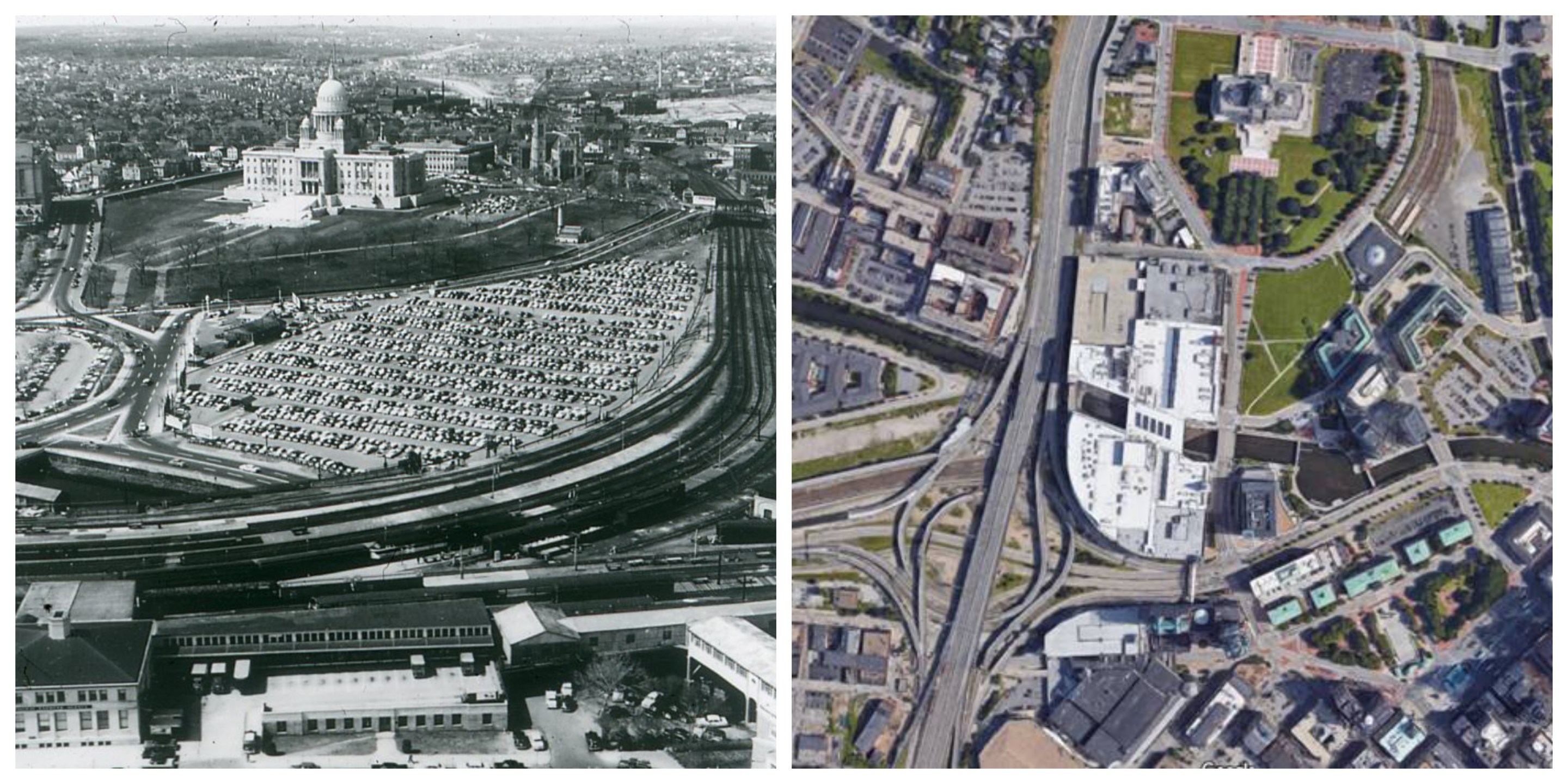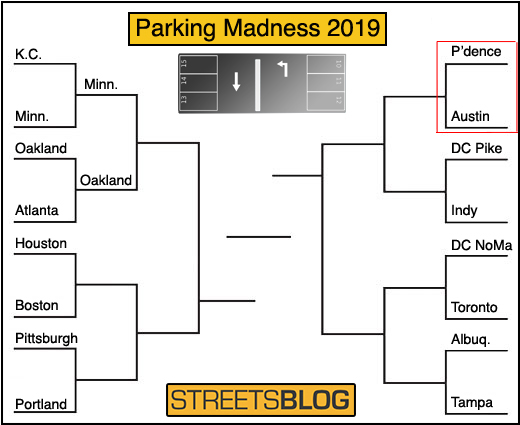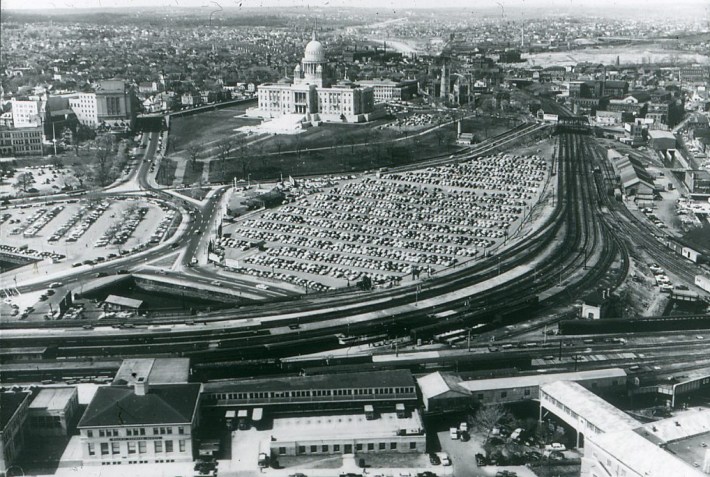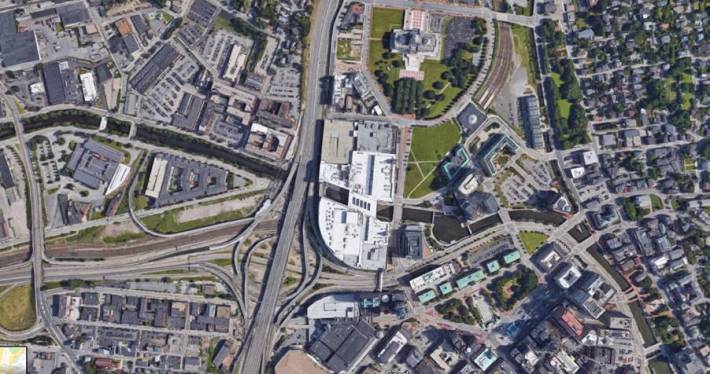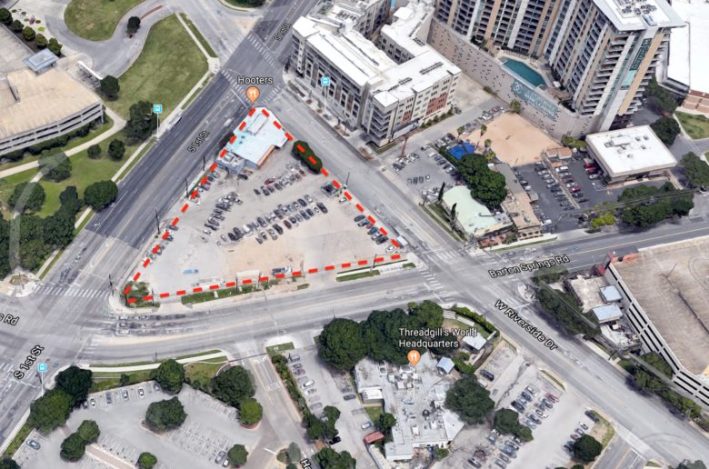Are you guys ready to see some more rehabilitated parking craters? We hope so!
We're plowing through the first round at this year's Parking Madness tournament, comparing former urban surface parking lots that have since been turned into places for people to live, and parks and lots of other more useful stuff than space for empty cars.
There's still time to vote in yesterday's matchup, which pairs Portland and Pittsburgh. But the polls are closed in our Houston vs. Boston matchup, with Houston prevailing.
Now here we go.
Providence
Reader Kevin Aherne, who submitted these before-and-after photos, writes it was a long journey from asphalt moat to walkable statehouse grounds:
Years ago, much of the usable space between the Rhode Island State House and the train station in downtown Providence was, simply put, a parking crater. Earlier development had given preference to vehicle-based needs and several tracts of the historic Woonasquatucket River had been buried below blankets of asphalt. Further, the city’s downtown, which should have been just steps away from the State House, had become virtually unreachable by foot, with a maze of parking lots, freight yards, and rail lines segregating what is now known as Capital Center from the heart of Downtown.
In the late 1970s, a new vision was developed for this land, bringing together initiatives to relocate (below ground) a portion of the railroad tracks, create new streetscapes and public green space, uncover and re-channel the river and develop the tracts of land which had been parking lots into commercial, residential and retail space. Over the next several decades, this former parking crater became home to new rail station, millions of square feet of new residential and commercial office buildings and public open space. Decades after the river was uncovered and new streets were established to reconnect Capital Center to the rest of Downtown, the City continues to work with developers to fill in the remaining urban fabric in Capital Center. As of early 2019, two key projects are under construction on formerly vacant lots in this area including an 8-story, 120-room extended stay hotel and a 169-unit apartment building.
A significant part of this transformation was the creation of the award-winning Waterplace Park, which reclaimed the waterfront for pedestrian and recreational use. Now, nearly a mile of the river is lined with cobblestone walkways, plazas, pedestrian bridges and other features, and is home to one of the region’s most prolific public cultural events — Waterfire.
For the record, state capitol parking craters are a thing. We've featured both Hartford and Lansing, as bad examples, in previous tournaments. Lansing actually won (by which we mean lost) last year. Often these craters stem from free parking provided to state employees.
Kudos to Rhode Island, for building a better public space around your state capital.
Austin
Next, check out this transformation in South Austin.
Austinite James Rambin, editor of the real estate site Austin Towers, submitted this location for the competition.
This spot was formerly a Hooters Restaurant with a massive parking lot, he tells us. The "after" image here is actually a rendering of the new development, which is called RiverSouth and will contain 300,000 square feet of office space and 18,000 square feet of retail. Demolition of the Hooters just took place a few weeks ago. It looks like the big structure right next to it is still an enormous parking deck, however.
Which deserves to go on to the second round? Vote now — and check back later to see who's won.
